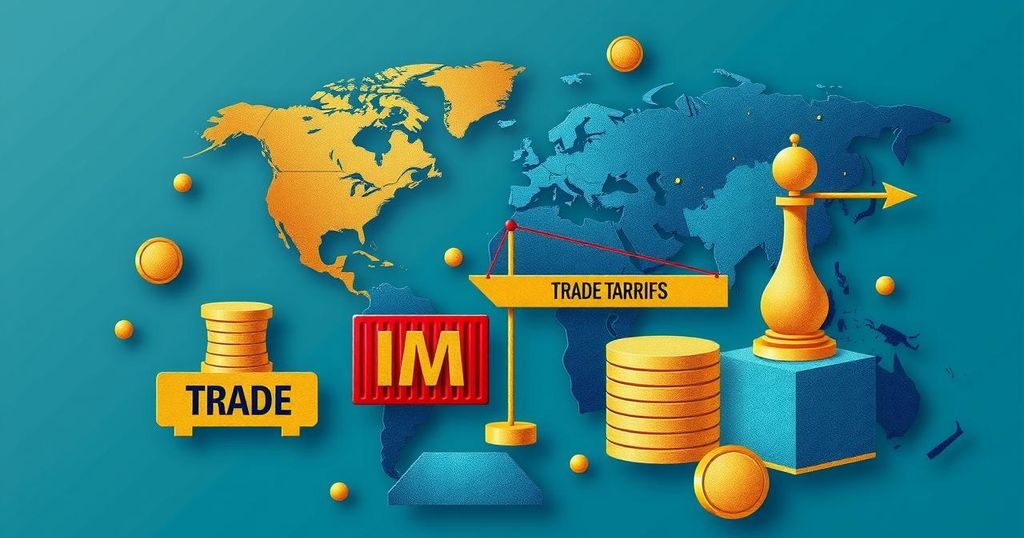White House Critiques India’s Burdensome Tariffs Impacting U.S. Trade

The White House asserts that India’s testing requirements hinder U.S. trade, potentially costing billions. An executive order by President Trump aims to rectify trade deficits by addressing disparities in tariff rates, particularly with India, which imposes high tariffs on U.S. products. The order includes plans for reciprocal tariffs and highlights significant differences in rates across various products, marking a pivotal move towards fairer trade practices.
The White House has indicated that India’s extensive testing requirements present significant barriers for U.S. companies, potentially costing them substantial sales. It has been suggested that removing these restrictions could lead to an estimated increase of $5.3 billion in U.S. exports annually.
President Trump recently signed an executive order titled ‘Regulating Imports with a Reciprocal Tariff to Rectify Trade Practices that Contribute to Large and Persistent Annual United States Goods Trade Deficits.’ This order was characterized by the President as ‘Liberation Day,’ with April 2, 2025, marked as the day ‘American industry was reborn.’
The executive order outlines the tariffs imposed by India on American products. A fact sheet from the White House underscores the differences between tariff rates that the U.S. and other nations, including India, apply. It highlights that while WTO members agreed on binding tariff rates on a most-favoured-nation basis, they did not commit to maintaining uniformly low levels of such rates.
Furthermore, the order reveals that the United States boasts one of the lowest average MFN tariff rates globally at 3.3 percent, in contrast to India’s rate of 17 percent, among others. The document emphasizes that average MFN rates often hide significant variations in product-specific tariffs.
To illustrate, the U.S. imposes a mere 2.5 percent tariff on certain passenger vehicles, whereas India imposes a staggering 70 percent tariff. Similarly, while the U.S. has no tariffs on network switches, India enforces a 10 percent rate. Other comparisons include ethanol tariffs and husked rice tariffs, where U.S. rates are comparatively lower.
During the announcement, President Trump displayed a chart highlighting the tariffs imposed by various countries on U.S. products, with India noted as imposing a 52 percent tariff. He stated that the U.S. will now implement “discounted reciprocal tariffs” of 26 percent on Indian goods, emphasizing that the U.S. has been at a disadvantage for many years.
Trump remarked on India’s tariff strategy, indicating a deep friendship with Indian Prime Minister Narendra Modi while expressing dissatisfaction with India’s treatment of U.S. trade.
In summary, the White House’s stance on India’s tariff practices suggests a strong push towards enhancing U.S. export potential, addressing perceived trade inequities. The recent executive order signifies a crucial step towards creating a more balanced trade relationship while highlighting significant discrepancies in existing tariffs. By enforcing reciprocal tariffs, the U.S. aims to re-establish its competitiveness in the global market, particularly with key partners like India.
Original Source: m.economictimes.com








